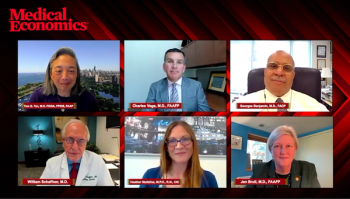
- Medical Economics January 2024
- Volume 101
- Issue 1
Navigating e-visit billing: tips for primary care physicians
In an age where
Many
The digital transformation
Digital innovation, undeniably, ushers in an array of new tools and systems that make health care delivery more efficient. Electronic health records (EHRs), telehealth platforms and patient portals are just a few advances that have greatly expanded the capabilities of health care organizations. Such tools not only enable real-time communication, but also foster a more patient-centered approach.
However, these tools come with challenges. One critical area is in how digital technology has enabled “care from anywhere,” blurring the once-clear boundary around when a conversation with a patient is billable. As a primary care physician, how do you navigate these waters without alienating your patients or undervaluing your services?
The patient’s perspective
From the patient’s standpoint, the primary concern is clarity. Patients appreciate the convenience of e-visits but are wary of hidden or surprise charges. They are accustomed to sending an email or calling their physician to ask questions without being charged as though they were receiving in-office services.
This means that physicians need to educate patients on these changes and provide clear guidelines on what types of digital communications and scenarios will be billed. Being clear about the costs up front is crucial to helping patients understand why a change is being made. Transparency not only prevents later misunderstandings but also builds trust.
Compensation for services
On the other side of the equation, physicians want assurance that their services, even when offered digitally, are appropriately valued and compensated. This sentiment is wholly valid, given that e-visits often require the same level of expertise and, sometimes, even more preparation.
The regulatory and insurance policies on e-visit reimbursements are always changing. It’s important for primary care physicians to stay up to date on these changes to ensure they’re properly reimbursed for e-visits. The American Telemedicine Association is one resource that brings together updates from across the country on virtual health regulation. The U.S. Centers for Medicare & Medicaid Services also has a section on its website dedicated to telehealth-related updates to help physicians stay informed.
Transparent billing
Before educating their patients, physicians need to create a clear set of guidelines on what types of e-visits are billable and what types of patient communication are not. These guidelines will vary from practice to practice, and factors such as insurance reimbursement, specialty and patient demographics should be considered when drafting them.
Here are four tips for creating effective e-visit billing guidelines:
Clear communication with detailed information about charges is crucial. Before initiating an e-visit, provide patients with detailed information about potential charges. Be clear about when a call or email from a patient is billable and when it is not.
Demonstrate and explain the value of e-visits to patients. Patients might not understand the intricacies of e-visits. It is important to explain that these visits require the same level of care, attention and expertise as in-person consultations.
Allow an open dialogue. Encourage patients to ask questions about e-visit charges. The more they understand, the less likely they are to feel blindsided by unexpected charges. The name of the game is transparency and accessibility.
Keep your patients updated. Billing guidelines, especially for newer services like e-visits, may evolve. Stay updated on the latest regulations and best practices and communicate any changes to your patients promptly.
Sarah M. Worthy is CEO of DoorSpace.
Articles in this issue
almost 2 years ago
Financial planning for physicians in an uncertain economyalmost 2 years ago
The role of texting in patient-centric carealmost 2 years ago
This year, technology will change primary care as we know italmost 2 years ago
The independent medical practice is not deadalmost 2 years ago
Concierge medicine set to soar in 2024almost 2 years ago
Captive insurance safeguards patient privacy in medical practicesalmost 2 years ago
Changes are coming to language access requirements in 2024almost 2 years ago
The Liver Meeting 2023, BostonNewsletter
Stay informed and empowered with Medical Economics enewsletter, delivering expert insights, financial strategies, practice management tips and technology trends — tailored for today’s physicians.








